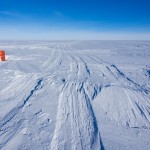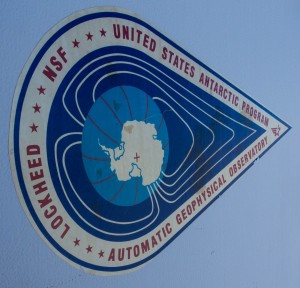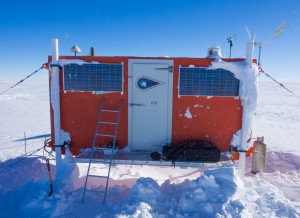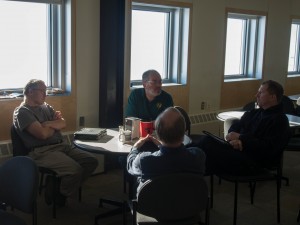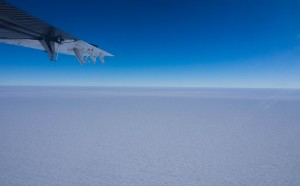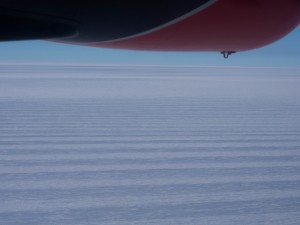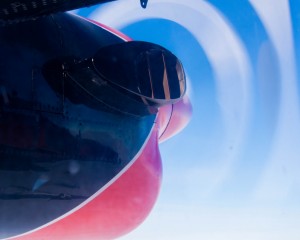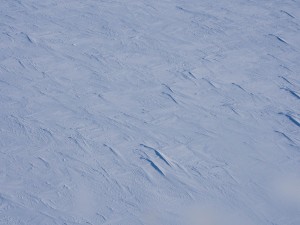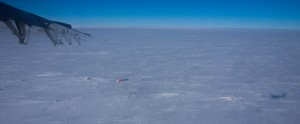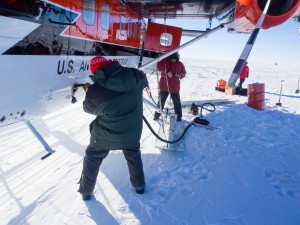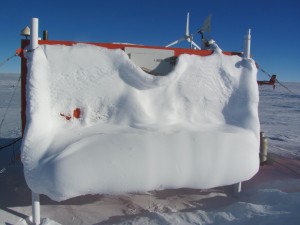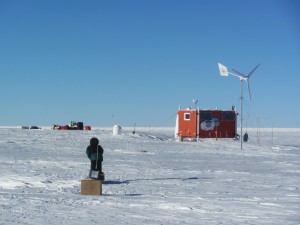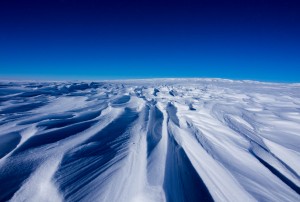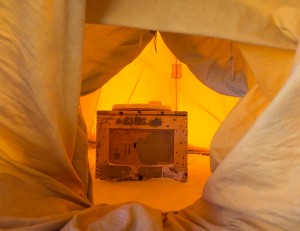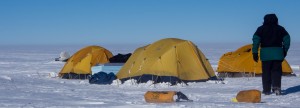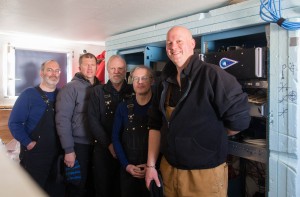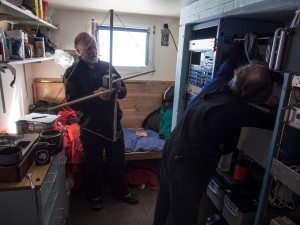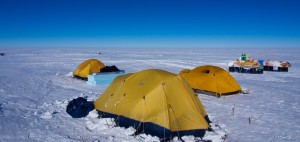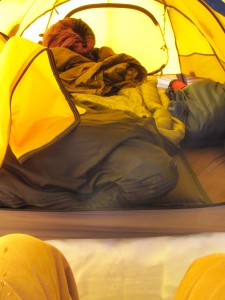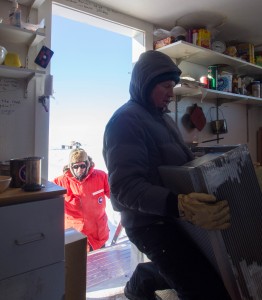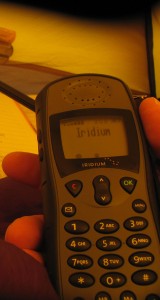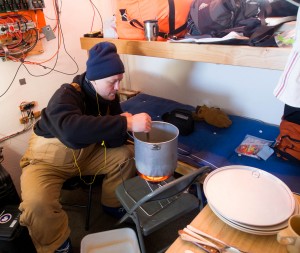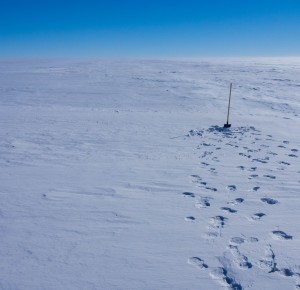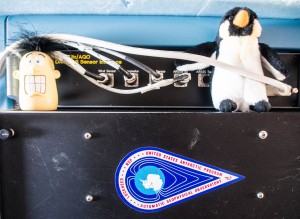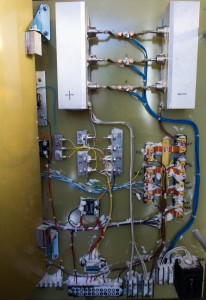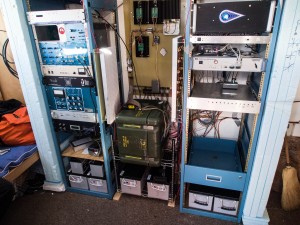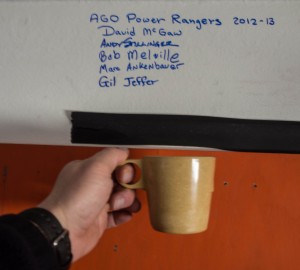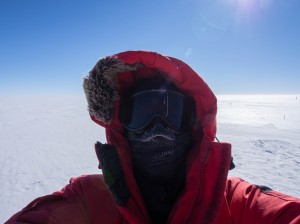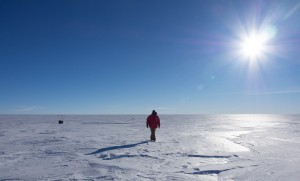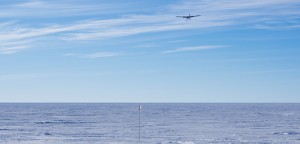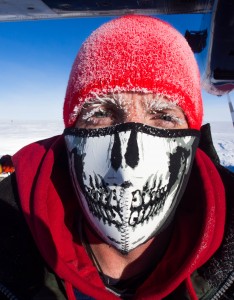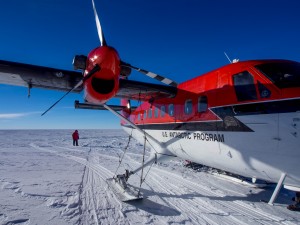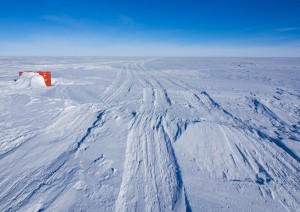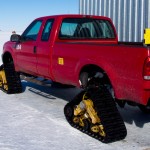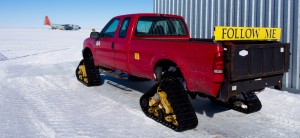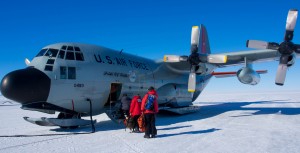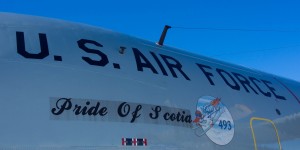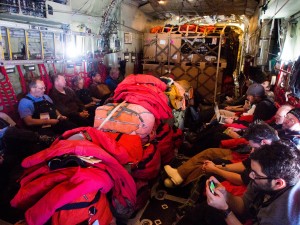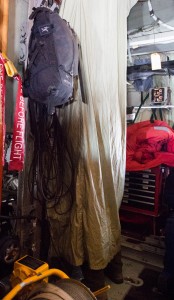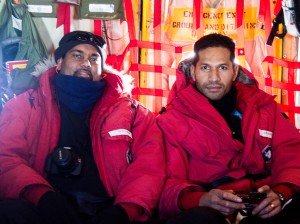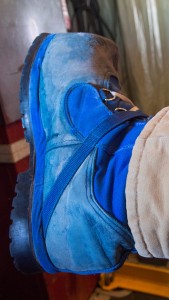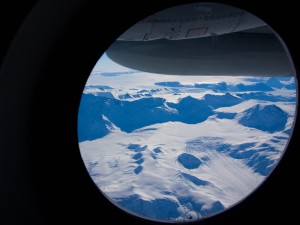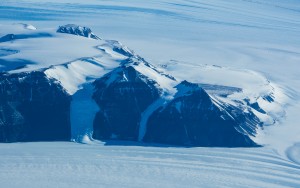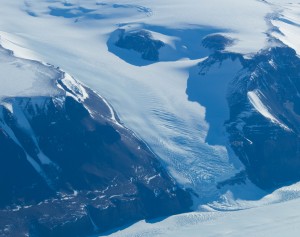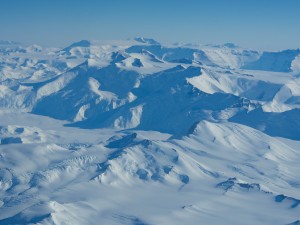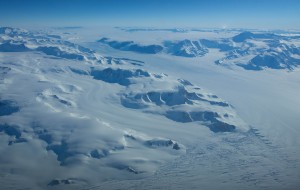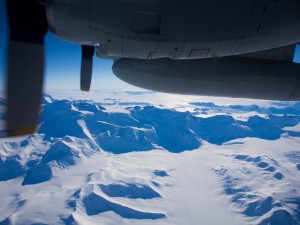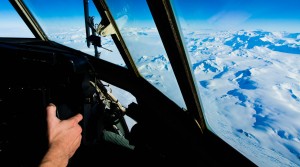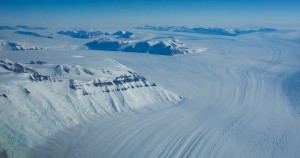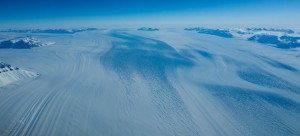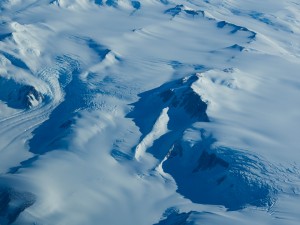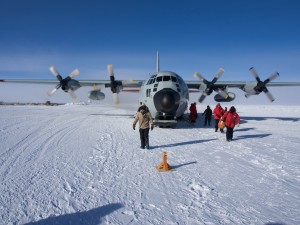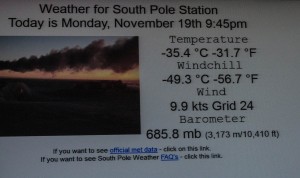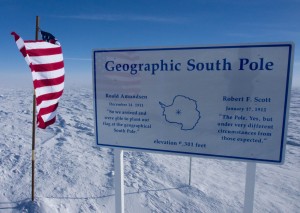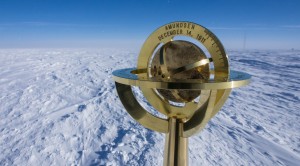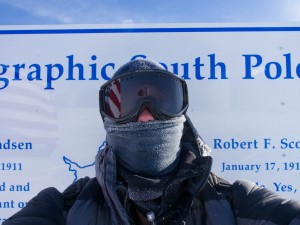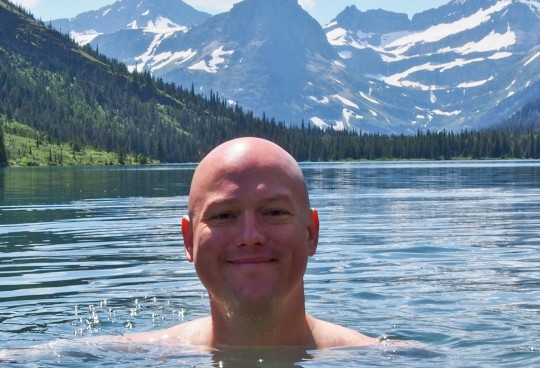Thus begins the adventure of the AGO.
AGO stands for Automatic Geophysical Observatory.
In functional terms they are 8’x16’ insulated boxes in five scientifically significant spots around the Eastern Antarctic Plateau.
Think of them as small Antarctic single wide trailers.
They have to be the most remote livable structures on earth.
I might be wrong, but I’m not sure how.
There are four men who make up this AGO group other than myself.
They remind me of an Antarctic Science A-TEAM.
Bob Melville, Andy Stillinger, Gil Jeffer and David McGaw.
Bob and Andy are the main two while Gil and David are new to the project this year.
Their specialties range from engineering, electronics, computers, physics and science in general.
The night before we left they were still up at 3am going over last minute details.
Our first round of five brought us to AGO 3 which lies at 9600 feet and is five hundred miles from the South Pole.
Because of weight restrictions we had to break into two flights.
It takes 3 ½ hours to fly there from the South Pole on a Twin Otter.
We sent three people and gear in on the first flight and two more people and more gear in the next day on another flight.
The South Pole and the AGO camps have the same landscape which is flat white snow.
The difference is that the South Pole is surrounded by buildings which break up the flatness a bit.
The area around the AGO is board flat and surrounded by miles and miles of nothing but miles and miles.
There tends to be a texture of wrinkles and ribs.
The Russians call these Sastrugi which means “groove”.
I enjoyed explaining to Bob, that I want to start a band called Sastrugi.
Or, that he should “get his Sastrugi on”.
You get the point.
As we arrived the Twin Otter banked left which gave me a perfect view down at the expansive AGO compound.
We would call this place home for the next week.
After landing, the pilots must refuel the plane using 55 gallon barrels that have been stashed at the camps through the years.
We loaded the Twin Otter the evening before with food, camp gear, electronics and tools.
Bob, David and I began the process of unloading and hauling the supplies across the windswept landscape on a banana sled.
When we arrived at the AGO we saw that the winter had deposited a huge ducktail of snow in front of the door which blocked our entrance.
Bob kept hauling supplies back and forth.
He is a hauling machine, its impressive!
I started slashing through the barrier of snow that blocked the entrance to the only wind block in thousands of square miles.
When finished shoveling, I took over hauling and let Bob and David work on getting heat going in the AGO.
We first start heating with a propane device called Mr. Heater.
Eventually the wind turbine will create electric heat.
Before that happens they will have to give a lot of attention to the labyrinth of internal electonic devices.
It didn’t take long for Mr. Heater to warm the small insulated structure to a safe temperature.
Even 20 or 30 degrees is better than the blustery -20F conditions outside.
The pilots departed for the South Pole leaving us alone at our new home.
They will return tomorrow with Andy and Gil.
They are busy completing last minute touches on the electrical system that will be installed over the coming week.
We had to work in short bursts because of the unrelenting wind and cold outside.
David addressed the stove which he found had water in the propane lines.
As he tinkered, Bob and I got the Scott tent prepared.
There’s obviously no plumbing in this high end middle of nowhere.
The toilet is a hip deep hole dug in the ground with a wooden box placed over it.
There is a toilet seat carved out of thick foam insulation board.
It’s warmer than any toilet seat I’ve ever sat on.
We all muscled the pointed Scott tent over the wooden box and dug the anchors deep into the snow using a technique called dead men.
We placed a piece of bamboo into a 3ft deep hole in the snow and used it to tie off the anchor ropes.
Then we rushed back into the AGO to warm up.
We functioned in bursts of productivity.
We would go into the AGO to dry out our frozen facemasks.
Then back out to triple team one of our mountaineering tents.
The winds would have beaten a two person tent team.
Then back in to thaw ourselves and eat frozen chocolate bars.
Then another triple team tent detail.
By the time Andy and Gil showed up the next day, camp was set up and all was well.
The following days were spent huddling in the AGO from the elements and dancing around each other.
Five grown men in such a small space is beyond tight.
Then add in five huge parkas, food, tools and electronics.
It is beyond claustrophobic on normal American standards.
Every time you had to move, at least two other people had to move also just to allow the process to unfold.
Having a huge bald guy as a field coordinator did not help the situation any.
So when I was not needed I would often adjourn to my tent to stretch out.
Tent life in Antarctica is well better than it sounds.
We are here during summer which means the sun never sets.
2AM is like noon when the sun is highest in the sky and there for the warmest.
The constant battering winds didn’t help anything but the tent often got up into the 40’s and 50’s at times.
The sun combined with warm layers and a huge -40 degree sleeping bag, tent life is quite pleasant.
Bob, Andy, Gil and David worked chaotic schedules.
Often they even worked around the clock to get all of their science, power and data transmission devices up and running.
I can only imagine this is an extremely difficult process compared to what their peers deal with back in the United States.
High tech science is very internet based in 2012, something that we have absolutely none of.
There are two Iridium satellite phones, but we are 18 hours different from the East Coast where all their team members are located.
Often Bob would stay up till 4 in the morning to make a telephone call to people in the States.
That way they had a full day to address the issue and get back with us.
Scheduling is a constant issue.
Antarctica, is a harsh continent and nothing is border line easy.
AGO life is a fine line between intricate science and base level grunt work.
Twice a day we would go outside with a large box lined in plastic.
Filled to the brim with snow chunks the box is hauled back.
Then for the next hour one of us will sit in the corner and melt snow for drinking water.
It tastes amazing by the way.
Not much in the way of pollutants to worry about.
The key is to walk up wind from the AGO where no past groups have ever placed their designated pee flag.
Very key indeed!
When things get too out of control and we need to calm down, Bob jokingly brought a “therapy penguin”.
With the same thought in mind I brought a talking head that says, “Calm down, don’t stress, take it easy” that was given to me by John at the Vitamin Store in Missoula.
I named him Carl.
We have now made them a couple, Carl and Therapy Penguin of the Central New Jersey Penguins.
They make a lovely couple.
We need outside stimuli, BAD!
Four days later the Twin Otter pilots came and took Andy, Gil and David back to the South Pole.
*Youtube video*
They got a head start on further power system production while Bob and I stayed two more days at the AGO.
As the field coordinator, I have to go in on the first plane and out on the last plane.
Things slowed down tremendously once it was just Bob and I.
We each got our own side of the AGO.
After you do the dance of the AGO with five guys, two feels like you live in a palace.
Bob was in heaven working on this science and listening to music.
We both got a bit of much needed rest.
I even watched a movie and worked on this blog post a bit.
On our last evening we both enjoyed a celebratory toast from a bottle of Wild Turkey that was left there from a past group.
We celebrated what seems like the whole process working properly.
No small feet and worthy of a cheers.
Wild Turkey on a block of Antarctic snow seemed like a romantic rite of passage.
Certain things are just the right thing to do when posed with the option.
One of my main job duties is calling in weather observations many hours before a plane departs to pick us up.
This process has started to become one of my favorite times at an AGO.
There is almost no quiet personal time with such cramped quarters.
But, 5am at an AGO is pleasant.
My mug is filled with coffee and powdered milk.
Before I left Montana I downloaded a lot of BBC News and Dirt Bag Diaries podcasts.
Hourly I have to walk outside, take wind speed and direction, temperature, visibility and barometric pressure measurements.
But then it’s back inside for 50 more minutes of peace, quiet, coffee and podcasts.
All in all, this first round of AGO went great.
Despite what Bob describes as the second worst round of AGO weather he had experienced I was very happy.
The tent and the AGO box felt very normal but then you open the door or the vestibule.
Then expanses of the Eastern Antarctic Plateau rolled out before you.
I’m obviously a person that derives happiness from a mountainous landscape, but this massive expanse of frozen nothing holds a calming beauty for me.
Now that I know what to expect I’m excited to see and experience the other four AGO sites.
But, for now its time to go back to the South Pole.
The pilots are on their way and there are lots of last minute jobs to complete.
After they land we only have about another 20 or 30 minutes to make sure everything is dialed in.
Blue board has to be put back up to insulate the electronics from the cold Antarctic winter.
Then break down the Scott tent and put the shutters up on the two windows.
More than anything else double, triple and quadruple check that nothing is being left behind.
There will be no going back to turn off the stove or flip the lights off.
We will be the last two people at this building for a couple years.
Leaving behind the wallet, watch or keys would be an irreversible mistake.
Up, up and away to 90 degrees South and a well needed shower.
To Life
